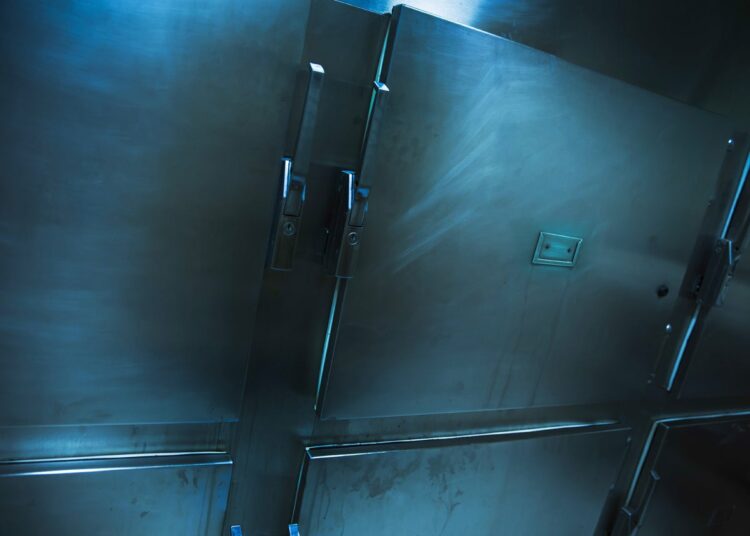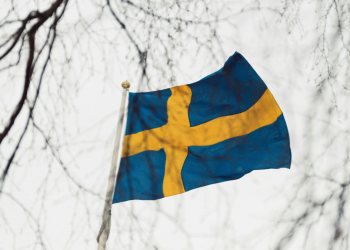[This article originally appeared in SALVO (www.salvomag.com) on January 31, 2020; it is reproduced here with permission. – Ed.]
A story out of the United Kingdom this week should startle anyone who cares about biomedical ethics.
The headline in The Telegraph reads, “Sperm could be harvested from dead men to ease donation crisis, say British doctors.”1 The story is coverage of a new research article by Drs. Nathan Hodson and Joshua Parker that appeared in the Journal of Medical Ethics recently. “Many people hope that after death their bodies will be used to benefit others,” the doctors write. “It is both feasible and morally permissible for men to volunteer their sperm to be donated to strangers after death in order to ensure sufficient quantities of sperm with desired qualities.”
Their proposal has a few “benefits,” the doctors argue. First, it would help to address the shortage of willing sperm donors in the United Kingdom. Currently, the U.K. imports around 7,000 semen samples from the United States and Denmark combined to ease its own shortage. Secondly, the harvesting of semen from dead men potentially helps to address worries about genetic defects, and could also help in “diversity of supply”—most current donors are white.
Not all are in favor of the idea. Commenting for The Telegraph, Professor Allan Pacey of the University of Sheffield says that such donations “felt like ‘backward’ step when society had moved so far towards uniting sperm donors with their children.” And Sarah Norcross, Director of the Progress Educational Trust, advised, “It is also vital to seek the opinions of donor-conceived people about what they think the impact would be of never being able to meet the donor.”
This story is just one more example of how very adult-centric the fertility industry is. Only once, at the very end of the piece, does some lone voice ask, “But is this good for children?”
And although the idea of harvesting sperm from dead men seems rather Brave New World-ish, we’re already seeing some pretty Brave New World scenarios right now. A lesbian couple made headlines recently for becoming the first to welcome a “two-womb baby,” in which an egg from one woman was artificially inseminated, replanted back in that woman’s uterus for the beginning of gestation, and then transferred to the other partner.2 (During any point in the “two-womb” process, the baby could easily have died—but rather than discuss that, the story hailed the new procedure as a great advance for lesbian couples who both want a “biological link” to the child.)
There was also the case of one fertility clinic that reported the loss of 4,000 embryos and eggs when one of its freezers failed.3 Perhaps most horrifying of all is the estimated hundreds of thousands of abandoned frozen embryos in the U.S. alone—these are babies whose parents have stopped paying the storage fees and have not responded to calls or letters.4 And how many frozen embryos are there whose parents have not yet abandoned them? No one knows for sure, as the U.S. government doesn’t require fertility clinics to report the numbers.
These are all horrifying situations, and they share a common theme: Adults have stopped caring about what’s best for children. Adults who cared about children would instead tout some of the known difficulties artificially reproduced children face, such as a higher rate of developing cancer5, a two-and-a-half times greater likelihood of low birth weight, and two times the risk of birth defects.6
And that’s the physical stuff alone. There have been, to date, almost no studies of the children born of artificial reproduction and what they think about their own conception, or whether they have an increased rate of emotional or behavioral problems. The technology is still too new.
The closest study group we have for comparison—adopted children—would give us reason to believe that children who are separated from a biological parent are going to have some of the same emotional difficulties. Katy Faust, founder and president of children-rights advocacy group Them Before Us, argues that the big difference is that in traditional adoption, the adoptive parents are responding to an already-existing hurt—one or both parents cannot, or will not, keep the child.8 For the children of ART, however, the parents themselves create the hurt—the lesbian couple who doesn’t see the point of a dad, or the married couple who only wants one of the three embryos they have created, or the single woman who creates a baby with a sperm donor because she can’t find a suitable mate.
Is infertility tragic? Yes. Would it be wonderful if every loving, willing, married, female-male couple could welcome a baby? Of course. But tragic as it may be, no one guarantees adults the right to a baby. We can no longer afford to run roughshod over the children in our desperation—or for our own convenience. Let’s stop, for a minute, asking what is possible, and start asking what is moral. Let’s stop creating babies by the hundreds of thousands, when we have no idea what happens to those babies.
And let’s certainly not make the crisis worse by harvesting the sperm of dead dads.
Notes:
1.Sarah Knapton, “Sperm could be harvested from dead men to ease donation crisis,” The Telegraph, January 20, 2020.
2. Lia Eustachewich, “Lesbian couples welcomes ‘two-womb baby,” New York Post, December 4, 2019.
3. Laurel Wamsley, “Ohio Fertility Clinic Says 4,000 Eggs And Embryos Destroyed When Freezer Failed,” NPR, March 28, 2018.
4. Mary Pflum, “Nation’s fertility clinics struggle with a growing number of abandoned embryos,” NBC, August 12, 2019.
5. Angela Oketch, “Cancer risk found in babies born through IVF,” Daily Nation, January 21, 2020.
6. “Expert warns of IVF time bomb,” Daily Mail.
7. Katy Faust, “Why Embryo Adoption Damages Children’s Rights,” The Federalist, December 4, 2019.




















Discussion about this post